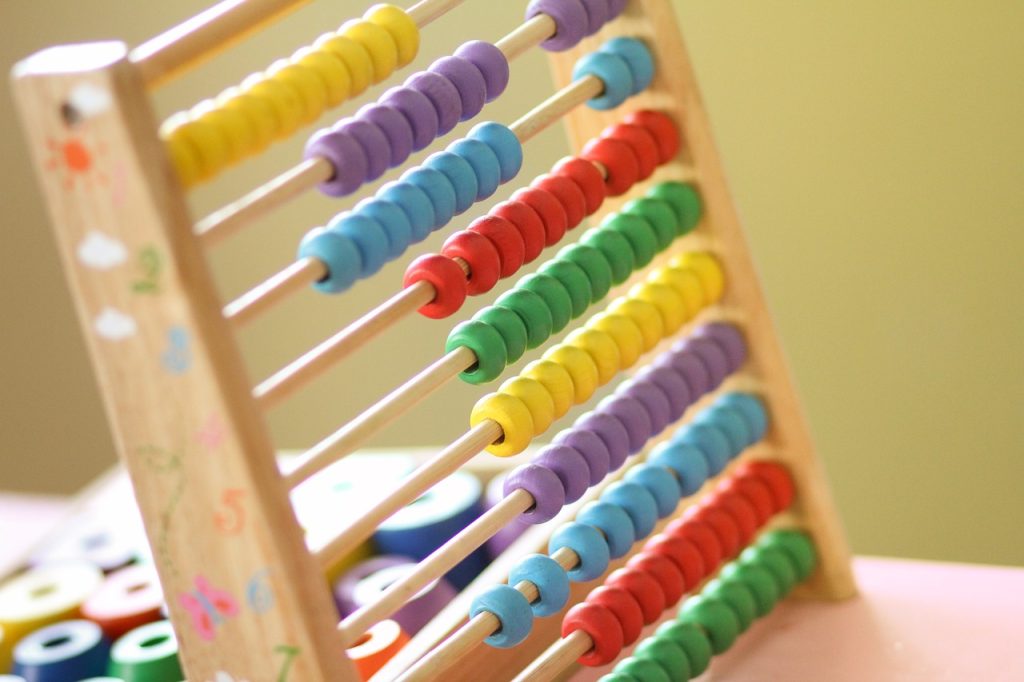School may seem a long way away but you can keep those mathematical skills ticking over and even developing, all while having fun.
Count – forwards, backwards, every which way. Start from different numbers and don’t be tempted to go on from 20 all the way to 100 if you don’t need to. At an early age this means saying a sequence of numbers to 5 or 10 but back that up with counting out concrete objects 1…2…3 and the understanding that ‘3’ relates to the total number of objects as well as what you say when you put the third object down. Bring this in naturally, for example you’re pouring drinks for your charges and their friends – ask them how many they need, get them to count out the glasses, count as you’re pouring the drinks. Count the number of petals on a simple flower or try to count the number of petals on a daisy – are they all the same? Get children used to the idea of estimating by guessing a number before you count the petals. Use mathematical language like the first swing and the second swing. Make collections and count them out, and use the shells or stones or sticks you’ve collected to sort them later.
Start at different numbers and ask them to count on, or talk about the numbers that come before or after it. This skill is like starting from the second line of a nursery rhyme, it comes fluently with practice.
For older children use their emerging addition and subtraction skills to talk about money. Use cash instead of a card as much as possible. Count in 1s, 2s, 5s and 10s using coins. Ask them how many different ways they can make the amount you need from the money you have. Can you get the exact amount? If you need to get change does it make the right amount? This is a concrete example of subtraction – how much change do you get from a pound. Pounds and pence are a great introduction to decimal points too.
The kitchen provides another opportunity to talk about number and shape. In weighing ingredients children see number on the scale, especially if you’re using one with a needle instead of a digital balance. Following a recipe allows you to introduce the concepts of double and half, both the number of people you’re making it for (e.g. making a recipe that serves 4 for 8 people) and the ingredients. Egg cartons and muffin tins are good examples of ‘rectangular arrays’. A rectangular array is a fancy way of saying ‘four by three’ or ‘six by two’ – it’s the beginnings of multiplication. You can also introduce division with your twelve fairy cakes. If you’re sharing between two people how many does each person get? What about three? Or four?
You don’t need to be ‘doing maths’ to develop skills in your charges. Look for opportunities to talk about number, shape, measure and money and their understanding will grow naturally.

